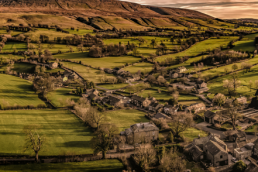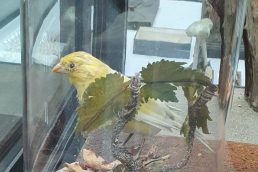Growing up in Bolton and being immensely fascinated with the darker side of Lancashire's rich and vast history, as well as all things of the occult, nothing speaks supernatural more than the tragic story of the Pendle witches. The following article is informed the writing of Thomas Potts, Peter Davies, Judith Bonzol, and Edgar Peel and Pat Southern.
The trials of the Pendle witches in 1612 were among the most famous Witch trials in all of English history and the most well documented of the seventeenth century. The area famously known as Pendle Hill, set in East Lancashire close to the townships of Burnley, Colne, Nelson and Clitheroe, has a summit of 557 metres above sea level and gives it’s name to the Borough of Pendle. It is here where eleven people, including the now infamous Elizabeth Southerns (aka “Old Demdike”) and Anne Whittle (aka “Mother Chattox”), were accused of witchcraft and demonology after the sudden deaths of ten people. They were subsequently imprisoned awaiting trial within Lancaster Castle.
The trials were held at Lancaster between 17th and 19th August 1612. Old Demdike never reached trial; the dark, dank dungeon in which they were imprisoned was too much for her to survive at her age. Nine year old Jennet Device, a resident in Pendle, was a key supplier of evidence for the Pendle witch trial which was allowed under the system from King James; all normal rules of evidence could be suspended for witch trials. An individual as young as nine would not have been able to supply key evidence normally. In the sixteenth century, it was accepted that villages had their own healers who would use herbs to produce medicines and were well-known to practice a form of magic. King James I was ruler at this time and, being fascinated by the occult, wrote a book in 1603 title Daemonologie in which he ferociously instructed it’s readers to condemn those who practiced the art of witchcraft, leading to the witch hunts. Many of those wrongly accused were executed. Unrest in villages up and down the country rose as suspicion amongst neighbours and family members led to communities turning against each other. One such example is young Jennet Device who gave evidence against her own mother, Elizabeth Device, who had to be removed by force from the court as she screamed and cursed her daughter’s actions against her.
So unusual was this persecution of witchcraft that it was recorded and documented in an official publication at the time, The Wonderfull Discoverie of Witches in the Countie of Lancaster, written by the court clerk Thomas Potts.








“Thou shall not suffer a witch to live.”
King James Bible
“…These are they who by the permission of God disturb the elements, who drive to distraction the minds of men, such as have lost their trust in God, and by the terrible power of their evil spells, without any actual draught or poison, kill human beings.”
“Maleus Malificarum” by Heinrich Kramer, German Clergyman and Witchfinder, 1486p
In England, there was never a unified policy of witch-hunting. Periods of breakouts were handled with statutes against witchcraft most notably under the reigns of Queen Elizabeth I and King James I. King James associated Catholics with witchcraft during his reign. In England, those found guilty of witchcraft were hanged, not burned in other countries. Here are a few images I discovered after looking through the Lancashire Society’s collection tucked away in the library of the University of Bolton. One book In particular being “The Trials of the Lancashire Witches: A Study of 17th century Witchcraft “ written by Edgar Peel and Pat Southern.
Bibliography
Bonzol, Judith. (2010) The Death of the Fifth Earl of Derby: Cunning Folk and Medicine in Early Modern England. Renaissance and Reformation / Renaissance et Réforme. [Online] pp. 73–100. Available from: doi:10.33137/rr.v33i4.15972. [Accessed 28 March 2022].
Davies, Peter. (1971) [1929]. The Trial of the Lancaster Witches, Frederick Muller, (Facsimile reprint of Davies’ 1929 book, containing the text of The Wonderfull Discoverie of Witches in the Countie of Lancaster by Potts, Thomas (1613).
King James. (2016). Daemonologie. A Critical Edition. In Modern English (no place; no publisher).
Peel, E and Southern, P. (1985). The Trials of the Lancashire Witches. 3rd ed. Hendon Publishers.















